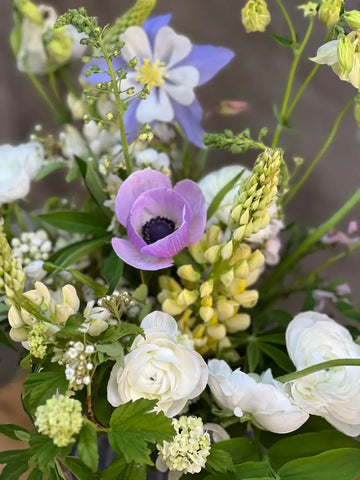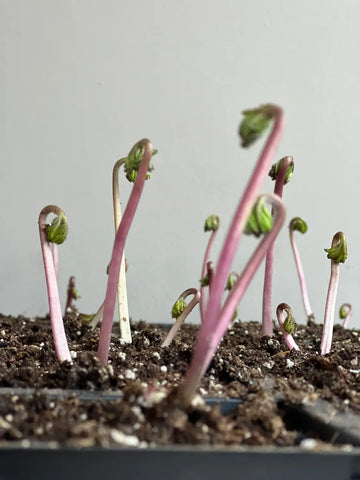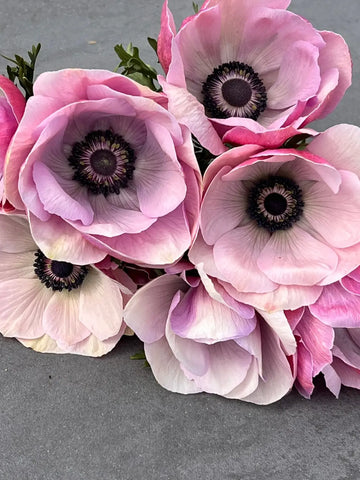
Growing Anemones: A Guide to One of Spring's Most Popular Flowers
Share
Anemones are a favorite springtime flower for many, not only for their vibrant colors and suitability in floral arrangements but also for their ease of cultivation. From a single anemone tuber, you can often get up to 20 flowers, making them an excellent addition to any garden or bouquet. These flowers are particularly popular with florists and brides planning spring weddings.

1. Preparing Anemone Tubers for Planting
When you decide to add anemones to your garden, you’ll notice that they grow from small, nut-like tubers that resemble acorns. Preparing these tubers properly is essential to ensure successful growth.

- Soak the Tubers – Before planting, soak the tubers in cool water for 3-4 hours to allow them to absorb moisture and swell up. This soaking step helps activate the tubers and encourages successful germination.
- Avoid Over-Soaking – It’s important not to leave the tubers in water for too long, as this can lead to rot. After soaking, the tubers will be approximately twice their original size, fully hydrated, and ready to plant.

2. Storing Tubers Before Planting
After soaking, place the tubers in moist soil or peat in a container:
- Prepare a container with a layer of damp peat, then cover the soaked tubers with an additional layer of peat.
- Store the container in a cool place at around 2°C for 10–14 days (up to a month).
- Check periodically to ensure that the tubers remain healthy and free of rot.

3. Initial Root Development and Planting
When you see the first small, white roots (about 0.3–1.3 cm long) appearing on the tubers, it’s time to plant them either in the ground or in pots:
- Choose a Planting Site – Anemones prefer a sunny or partially shaded location with well-draining soil. Plant the tubers in early spring when the soil is still cool but warming up.

- Prepare the Soil – Enrich the soil with compost if needed to ensure it’s nutrient-rich. Plant the tubers about 4-5 cm deep with enough space between each one to allow for growth.

4. Caring for Anemones
Anemones are relatively low-maintenance, but to encourage abundant blooms, they do need some attention:
- Watering – Provide regular, moderate watering, especially during the blooming season, to keep the soil consistently moist but not waterlogged, as excess moisture can lead to root rot.

- Frost Protection – Anemones are sensitive to frost, so in early spring when frost is still possible, consider covering them with mulch or a light fabric for extra protection against sudden temperature drops.

5. Blooming Season and Re-Use
With proper care, anemones will bloom abundantly in the spring months, producing beautiful flowers perfect for any arrangement or bouquet. Each tuber can yield up to 20 flowers, making them an exceptional investment for a season of vibrant beauty.

With a little patience and preparation, you can enjoy the stunning display of anemone flowers in your garden each spring, adding a touch of color and elegance to your outdoor space.









